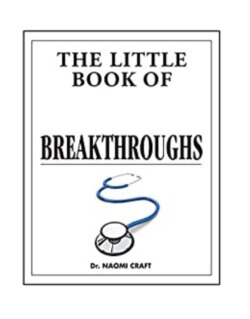Читать книгу The Little Book of Medical Breakthroughs - Dr. Naomi Craft - Страница 11
1280–1300 Italy Spectacles
ОглавлениеThe invention of spectacles transformed life from a shapeless blur to sharp focus for many people. It is not clear exactly when they were invented or by whom, but certainly they were in use by the end of the 13th century.
Although there were no spectacles in Ancient times, there were certainly many people with poor vision. Famously, Marcus Tullius Cicero (106–43 BC), the Roman philosopher and orator, wrote to his friend Titus Pomponius Atticus (c. 110–32 BC), one of Rome’s great writers and statesmen, saying that his slaves had to read to him because he could no longer read to himself now that he was old.
Allegedly there was an alternative even in Roman times: the Roman philosopher and dramatist Lucius Annaeus Seneca (4 BC–65 AD) claims to have read ‘all the books in Rome’ by looking through a glass bowl filled with water, which would have acted as a primitive lens.
The theoretical principles behind corrective lenses were already in place, as we have evidence that the Greek astronomer Ptolemy (85–165 AD) had described the basic laws of diffraction in roughly 140 AD. However, it wasn’t until the 17th century that these laws were formalized and developed further by Willebrord Snellius (1580–1626), a Dutch astronomer and mathematician.
The above illustrations shows a selection of early spectacles.
Reading stones, often made from quartz, became popular in the 8th century, first in Spain and spreading to the rest of Europe by the 11th century. These stones relied on a similar principle to Seneca’s bowl of water. A reading stone was simply a hemisphere of glass placed on top of the words to magnify the letters.
At that time the only people capable of making transparent glass were the glass blowers of Venice, so it is likely that the first spectacles were developed in Italy. One of the earliest inventors was probably the Dominican monk Alessandro da Spina from Florence around 1284, but there is no definite evidence for this.
The first mention of actual glasses is found in a 1289 manuscript, when a member of the Florentine Popozo family wrote in a manuscript entitled Traite de con uite de la famille, di Popozo:
I am so debilitated by age that without the glasses known as spectacles, I would no longer be able to read or write. These have recently been invented for the benefit of poor old people whose sight has become weak.
The first designs didn’t have sides and had to be held on the nose. Poorer people had theirs mounted in leather, wood, horn, bone or even light steel, while the upper classes had gold or silver frames.
For centuries, nobody found a good way to hold spectacles in place. Spanish spectacle makers tied silk ribbons on to the frames, which could be looped over the ears, and the Chinese added little weights to the end of the ribbons. It was only in 1730 that an English instrument maker, Edward Scarlett, designed spectacles with rigid side arms.
